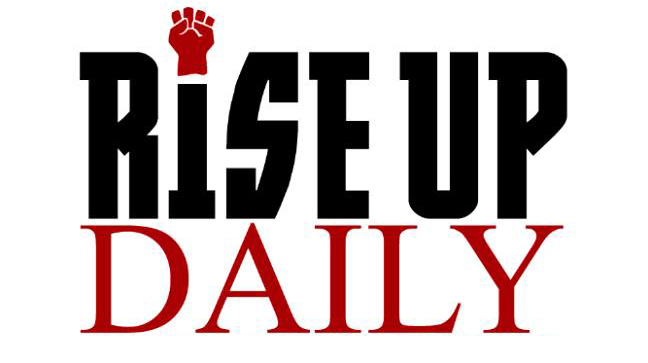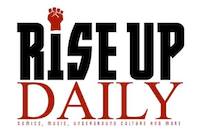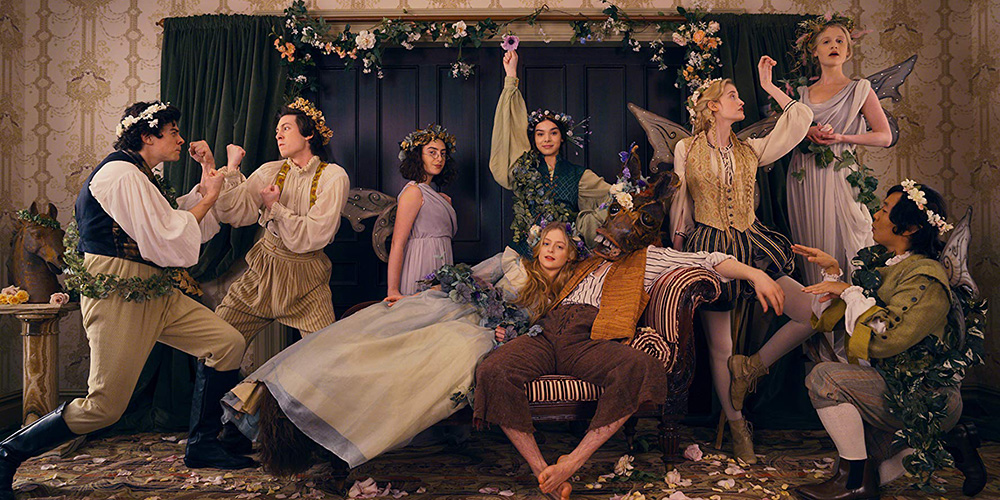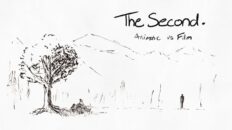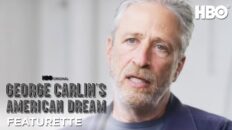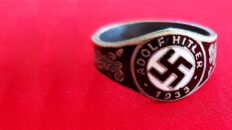Poets do not tend to be served particularly well on the movie screen. The landscape of cinematic poets is studded with examples of the trite (The Broken Tower, 2011), the banal (Shakespeare in Love, 1998), and the dull (Paterson, 2016). One can speculate as to why this might be the case; certainly, biopics in general are a mixed bag, and when you turn to the excavation of an author’s inner life (never mind a poet’s!), you are generally dealing with someone whose work is often more interesting than the craftsperson.
Emily Dickinson, one of a handful of aspirants to the title of Great American Poet, is a particularly stark example of this phenomenon. As Cynthia Griffin Wolff observes in her Dickinson biography, “[i]t would be difficult to cite an American author of commensurate power whose life offers less in the way of striking occurrence.” Dickinson’s inner life—apart from her many, many poems—remains largely opaque to us residents of the twenty-first century, leading to an endless number of visions and revisions of what she actually was: a repressed old maid? A proto-modernist? A feminist? A religious visionary? –None of which are products of her own self-creation in the way that, say, the idea of Edgar Allan Poe as a death-obsessed neurotic or of Walt Whitman as a patriotic horndog were consciously-created public images. Instead, these are all interpretations we impose upon Dickinson herself, and so it has ever been, since her poems were first unearthed. Her literary executors Lavinia Dickinson and Mabel Loomis Todd had their own very distinct ideas about who “Emily Dickinson” was, and they were not about to let little things like textual accuracy put them off the scent: witness the meticulous scrubbing of all sapphic undertones from the poetry as it was eventually published.
Given the vacuum that is Emily Dickinson’s life, it is not surprising at all that within the past few years there have been three very different attempts at re-presenting the poet to contemporary audiences. I have had the fortune (dubious in one case) of seeing two of them; Wild Nights with Emily (Madeleine Olnek, 2018) has yet to see a release on either DVD or streaming, though Amazon suggests that it will be along later this year. The other two figurations represent what we can call the poles of approaching revered historical figures. For the sake of symmetry, I will call them the iconic and the ironic. These presentations are, respectively, A Quiet Passion (Terrence Davies, 2016) and the Apple series Dickinson (Alena Smith, 2019).
Upon release, A Quiet Passion garnered quite a few loud praises; Rotten Tomatoes has it certified fresh with a 92% positive critics score. Cynthia Nixon was particularly singled out for her portrayal of Emily Dickinson—and rightly so; Nixon brings a certain tightly-wound energy to the role, particularly when Dickinson becomes embittered and the sparks really fly. Until then, well—one doesn’t like to speak poorly of an acknowledged masterpiece, but A Quiet Passion is quite frankly a member of the “dull” school of poetic lives. While undeniably pretty, it is lifeless. Nixon and Jennifer Ehle shine as the Dickinson sisters, but the rest of the cast is mannered, staid—and the mannerisms here have all the depth and lightness of a high school production of Pride and Prejudice. The whole affair is very respectful and respectable and very little else.
So much for the iconic. What of the ironic? Enter Dickinson, an Apple TV series that mines much the same territory that (I assume) is covered in Wild Nights with Emily—namely, the long-held theory that Dickinson was in fact either lesbian or bisexual and carried on an affair or a romance (or something) with her eventual sister-in-law Susan. In Dickinson this is treated less as a major revelation than as a subplot—indeed, Susan’s chief purpose in this version is to contrast satirically with Dickinson’s own obsession with Death (here embodied by Wiz Khalifa as a sharp-dressed-man who takes Emily on mystical carriage rides). Susan is, as we discover, wholly alone—the death that stalks the landscape of the nineteenth century has taken off everyone she cares about, which is why (eventually) she is obliged to marry Emily’s brother Austin. This fact is deeply important because Emily—played with much charm by Hailee Steinfeld—is, as it turns out, a perfectly normal teenage girl whose ghostly and gothic obsessions are, as with many teenage girls, as much an act as it is a real interest. The contrast between Emily’s romantic ideas of Death and Sue’s unromantic reality helps to ironize and throw into relief the young poet’s immaturity. When Death finally takes someone Emily actually cares about, her response is to reject him and throw a fit when he explains that, really, she isn’t any more important than anyone else living in that death-besotted century.
And this is, I think, what sets Dickinson apart. In a recent Washington Post article, the poet Tiana Clark meditated on why Dickinson is subject to so many revisions:
Because her poetry’s genius speaks to us across centuries and was so little appreciated in its own time, it’s tempting to imagine that its maker would share our modern social mores. When I was a teenager, though, I didn’t need poetry to be sexy or cool. I didn’t need for it to feel like a high-budget music video; I needed poetry to help me feel less alone in the world.
This is, of course, correct—but also very deeply wrong. The assumption that Dickinson is trying to bring the poet into line with contemporary mores seems intuitive, but the show is actually engaged in something quite different. It is an open secret that historical fiction is very rarely about the time-period in which it is set. When, mid-century, Hollywood turned to narratives of Ancient Rome, it was not actually Rome they were portraying but—depending on the film—Russia or America. Ben-Hur (the film) is a capitalist (or, at least, pro-America) tract, just as Spartacus is covertly a Marxist one. This is what critiques of any historical recreation on the grounds of “accuracy” very rarely get right: to say that Hamilton does a disservice to history is to misunderstand the point of Hamilton. Similarly, to say that Dickinson doesn’t accurately portray what life was like in the nineteenth century is to fundamentally misunderstand Dickinson. On one level, the show is, as The Vulture argues, “a show made for literary weirdos.” It is a show for people who take an unmeasured delight in basking in how deeply weird nineteenth century culture actually was, with its photographs of dead babies and the tendency of even terribly brilliant men to dig up their dead wives (ahem, Emerson). It is a twenty-first century view of the period, but it’s self-consciously so; no pretense is made that Emily Dickinson herself, as she existed, would be the sparkling personality that Steinfeld gives us. In fact, if she were, the show’s central joke would collapse.
Dickinson is a comedy based on a very simple joke: the contrast between contemporary mores and those of the nineteenth century. Both eras must be kept in mind when watching or the whole thing falls apart. It’s a joke that has been done before, of course. Another Period (2013-2018) did the-Kardashians-meet-Edith-Wharton to reasonable success. If anything, however, Dickinson is a tad smarter than Another Period. Rather than simply coasting on anachronistic jokes, Dickinson builds a narrative out of those jokes. The two celebrity cameos in the series—I mean, historical celebrities Henry David Thoreau and Louisa May Alcott—are a case in point. On the one hand, the Thoreau jokes are lazy and easy—his mother does his laundry, he’s pompous, he constantly receives visitors. These are the kind of jokes you see on Twitter every year when a new crop of college freshmen finally get around to reading more than the first chapter of Walden. The Alcott episode is much better, partly because the contrast between persona and reality is, if not more subtle (there is precious little subtlety in this show), at least more interesting: Alcott develops the plot of Little Women at the dining-room table while meditating on what kind of book would sell the best. This is (like the Thoreau jokes) rooted in historical reality: Alcott was an author of melodramatic potboilers who turned to “girl’s fiction” partly for the paycheck involved. Knowing that fact is key to getting the joke.
These celebrity cameos serve two purposes: first, they are jokes. Obviously. They’re jokes for us, though; they are based, not on how the authors in question would have been seen at the time, but on how we see them now—and by we I mean your average stranger-off-the-street who has read a chapter or two of Walden in high school and who has done Little Women the same courtesy (or possibly seen only a film of the latter—most likely the 1994 version). The comedy arises from the gap between the popular version and the “real” version. In this way, these apperances are smaller instances of the fundamental joke of the whole series—that Emily Dickinson, far from being a repressed spinster, is a bisexual goth girl.
So far, so Another Period. But insofar as Dickinson is also about the process of constructing a persona, these episodes are instructive for Emily herself. She is seeing different versions of how authors create a mask for themselves—sometimes out of pretentiousness (Thoreau) and sometimes out of calculation (Alcott). One suspects that coming seasons will see this theme replicated with other nineteenth century luminaries. Insofar as Dickinson is about anything that isn’t its central joke, it’s about this: the bildungsroman (indeed, a künstlerroman) of Emily Dickinson. It is imagining what it would be like for Emily Dickinson to have constructed a public literary persona, since the one we have is largely not of her own making. The interaction of these two levels makes the show work. If we were not invested in Emily as a character, and indeed as an artist, the show would simply be Another Period. If the show did not have the postmodern jokiness, the impossibility of its task—a narrative about a person who never made one for herself, at least not publicly—would be too glaringly obvious.
In terms of what Dickinson is trying to say about the present, there’s a number of possibilities. One is simply that it’s an example of how people today see identity. In this, it is rather more radical than simply trumpeting that Emily Dickinson was bisexual. The show is suggesting that the very idea of fixed sexuality is, perhaps, flawed—Emily moves between a love affair with Sue and a chaste emotional affair with her father’s secretary without a single thought. There is no sense of confusion. It’s simple: she likes both men and women, each in their own way. Ironically, this fluidity, which we today recognize as a perpetual Millennial affect (“I don’t like the gender, I like the person”) may be closer to how sexuality was actually experienced in the nineteenth century; certainly, the history of romantic friendships between members of the same sex would suggest that “sexual identity” was less of a straitjacket for them than it has become for us in our post-Stonewall period. More striking, however, is that—in spite of the number of words I’ve just poured out about Dickinson and sexuality—the show is not actually about Dickinson’s sex life or lack thereof. It is about her emotional life, to be sure—all of her family relationships are complicated—and it is about her development as a poet (since much of the chronology of her poems is confusing, this is largely conjecture). What is most remarkable about Emily’s sexuality is how thoroughly unremarkable it is. Her identity is not her sexuality; rather, her sexuality is a relatively minor part of her identity.
The politics of the show are another avenue of exploration. Dickinson is not subtle about drawing connections between its pre-Civil War setting and contemporary events. Rather than make a one-to-one comparison, however, I would like to suggest that Dickinson, as a show about identity-formation, is ultimately concerned with the question of how young persons can possibly form an identity in death-dealing times. Death was everywhere in the nineteenth century. Disease carried off whole families, as it does Sue’s. It seems strange, how obsessed these people were with death, until one understands how ever-present death was. And is; Dickinson’s obsession with death brings to mind (again) Twitter jokes about Millennials longing for the sweet release of death, to say nothing of the current vogue for true-crime narratives. Specifics are different, but the existential knowledge that one of your family may die at any moment of consumption is not (one imagines) too far removed from the near-certain knowledge that within twenty years large portions of the earth will be uninhabitable. Indeed, as I write this a large portion of the globe is actually on fire while in other places glaciers are melting at an alarming rate. Death stalks the landscape in our century as much as in Dickinson’s, and if that death is of an entire planet rather than a family, then so much the more existential. In either case, a fling with Death—whether or not he is personified by Wiz Khalifa—seems not only desirable but attractive. Dickinson, we might suggest, is us, and the dilemma she faces on the show is precisely the dilemma facing every young person (and, increasingly, every not-so-young person) in the era geologists are pleased to call the Anthropocene: how does one construct for oneself an identity when the very basis of that identity—I mean, life itself—is under siege?
Dickinson has been renewed for a second season, and I look forward to seeing what it does now that Emily has had a (probably temporary) breakup with Death. Tiana Clark is right when she says that there cannot be a definitive Dickinson—the older poet’s own reclusiveness made this ultimately impossible. In the future, I expect portrayals to alternate between the iconographic and the ironic (and whatever middle-ground Wild Nights with Emily stakes out). There’s certainly room for both; but for now, it’s the ironists who seem to have the most pressing vision.
